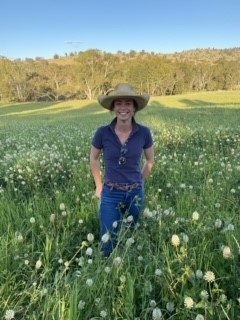Border Disease virus antibodies
Full title: Seroprevalence of Border Disease Virus antibodies in New South Wales Sheep Flocks
District Veterinarian - Cowra | Central Tablelands Local Land Services
Summary
Border Disease Virus (BDV) is a member of the Pestivirus genus. It is a highly infectious virus that causes a range of disease, but most significantly reproductive losses (both abortions and the birth of ill-thrifty lambs). If a foetus survives infection during gestation, it may become persistently infected - providing a source of the virus as they shed huge amounts into the environment.
BDV is similar to the more commonly known disease Bovine Viral Diarrhoea Virus or 'Pesti' in cattle. The production implications of Pesti virus in cattle is well understood, where it is regarded as the most significant endemic viral infection to cattle. To date there is very little recent data for the prevalence and impact of pestiviruses in the Australian sheep industry. Historically BDV infections were thought to be relatively rare in sheep in Australia, however two separate disease investigations carried out in late 2019 challenged this position. The presence of BDV in these large flocks lead to immediate losses as well as the birth of significant number of PI lambs - providing an ongoing source of infection.
These outbreaks of BDV raised an important question- were these an indication that BDV infection was an emerging disease in the NSW sheep population? BDV has the potential to be a source of significant production losses. If it was to become widespread in the NSW flock, based on current production, losses could amount to $250 million in the first 1-2 years and then in subsequent years the financial impact could vary between $30-50 million.
Importance of the research
The current project, funded by the McGarvie Smith Institute, aims to provide valuable research to establish if BDV is an emerging disease in the New South Wales sheep flock. It will not only establish what the state's flock exposure is, but also provide other insightful information including if changes in management have led to increased virus transmission (e.g. confinement feeding), and if the common practice of joining ewe lambs at a young age predisposes them to the disease. These findings have the potential to have far reaching impacts for the industry and may be invaluable for sheep veterinarians and producers to be aware of when looking at fertility investigations and preventative management strategies.

About Evie
After graduating in 2018 from Charles Sturt University, Evie started her career as a District Veterinarian in Young NSW, servicing predominantly sheep producers. Since then, Evie has moved to Cowra, where she continues to serve the local producers working as the District Veterinarian as well as working for her family farming business. Evie’s passion for sheep medicine has continued to grow, and she has been incredibly lucky to have a career that allows her to pursue it. Evie’s research aspirations will always be based on what is useful and practical and is hopefully going to give back to the industry in a meaningful way.